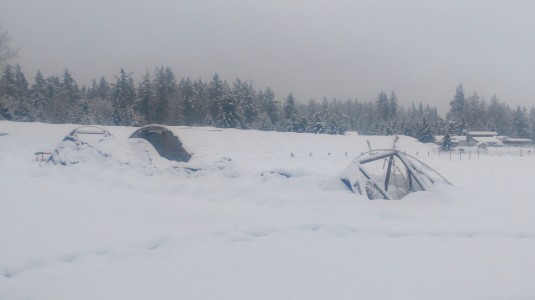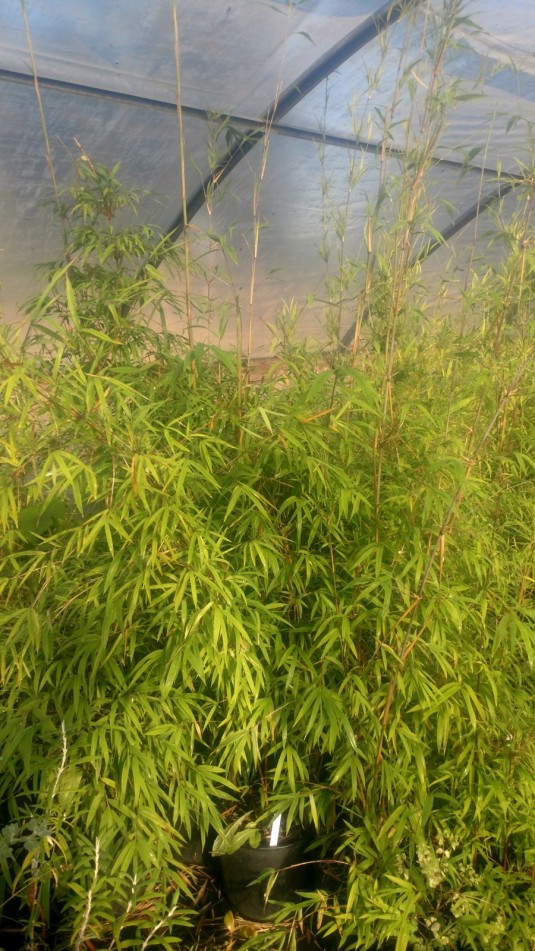So, a pleasantly mild summer here in Clallam County, Washington has come to a harsh and dreary end. Who remembers the hot summer we had in 2009 when it reached 103 in Seattle? We actually reached 103 here in Sequim on the day before that, but “only” made it to 100 on the following day (7/29, I think), which was hotter for Puget Sound.
I point this out only to remind myself that it can get hot here; because this summer, it did not. We only squeaked out a grand total of five days above 80 degrees, with the hottest day being 84 (which was on June 12th). Remarkably, we did not make it to 80 even once during the month of July. Like most of the Northwest, we also experienced warmer than normal nighttime temperatures throughout much of summer this year.
We also had considerably more rain this summer than we have have been accustomed to lately, with the last few summers having been drier than average. In particular, we had a very surprising, major soaking rain on June 27th which really helped tide things over. We don’t usually expect that, especially here in the rainshadow. And of course, if you live around here I don’t have to tell you that this September has been very wet. Since the second week of September, I haven’t had to water much of anything at all outside of the greenhouses, and the grass that had looked parched a month ago is turning green again already. I irrigated our lawn all summer (I always do this as a fire protection measure), but in the last couple weeks it has been out of control with hardly a dry day to mow it!
In general, the mild weather makes our job easier. I said something like that way back in 2011 when we had a cool summer (see – here it is!), and it’s still true. It is easier to get into the greenhouses and work when it isn’t so hot. And most of what we grow is sufficiently adapted to our climate that it gets enough heat for growth, even in a cool year. The only exception is some of the desert succulents and (non-opuntoid) cacti, which in many cases put on more growth the more heat they get, to a point.
Visitors to the nursery this year will have noticed that the snow last February crushed our shade house. This could have been prevented had I not deliberately pulled the shade cloth back on (the wind having blown it off) to protect the plants inside from frost. I am not too upset about this loss, since I needed to devote all my attention while it was snowing to clearing snow from the larger aluminum frame structures. Losing one of these would have been a much more significant disaster.
The shade house was the first nursery structure we built at our Sequim location. With help from family, it was built in haste in December 2008 when forecasts advertised a big freeze (which, of course, turned out to be significant indeed). It sheltered many valuable plants through our first Sequim winter. It existed for one winter as a greenhouse before I managed to finish the first aluminum frame greenhouse in December 2009. By that time it had already become the shade house. You can look back into the blog archives and read all about it, if interested. But now, we bid farewell to this structure. I am not going to replace it with the same sort of structure in the same place. I have other plans for this space, though it will be a while before I get to them.
In any case, the shade house was destroyed beyond repair, and a large collection of bamboos was trapped underneath it for a long time while the snow slowly melted. We have since dismantled what was left of the shade house and will repurpose the wood, most of which is in remarkably good condition. I was amazed how well the bamboos did. Although a few individual plants died, not one species was lost from the collection completely. As they were buried under snow for almost a month, with numerous nights in the 20s and two nights down to the mid-teens, I call that rather miraculous. (However, a few particularly vulnerable bamboos had been moved into the greenhouse in advance.) We have since moved them over to a part of the property with some tree canopy and they are looking great (plus a few in the greenhouses to sell).
Bamboos are not desert plants, but we keep them around because they have so many other desirable features. Admittedly they are a bit of a holdover from before I started the nursery with a water-wise theme. A few years back I decided they were important enough to me to continue growing them, which is still the case. With the cloudy, mild weather and relatively high humidity we have had most of the summer, they have been very happy. We are continuing to gradually increase them, especially the clumping (non-invasive) types, for eventual sale.
Another “holdover” from an earlier era would be the tree ferns. I would very much like to grow more of these, but I seem to have a problem with giving germinating treefern spore the attention it needs. Nevertheless I will continue in my efforts until we can make more species available. A modest crop of Cyathea dealbata we obtained from a friend is looking particularly lush as they enjoy the rain we have had this month. We also have a number of Dicksonia antarctica in the nursery which I am rather tempted to just put in the ground. Tree ferns are not at all drought tolerant, and certainly don’t fit the water-wise theme. But I had a minor obsession with them for a few years of high school and college. I still think they are intriguing plants and a lot of fun to grow.
Fortunately, I haven’t become completely distracted from water-wise plants. I have been potting up a ton of Agave and Yucca seedlings this summer, for future sale. Also, last year we were privileged to take some cuttings from a cactus collection in eastern Washington. As they have rooted and grown, they are generating a lot of interest and selling pretty well. So now, of course, we needed to go back and get even more! Some of you will have noticed a photo of these on Facebook. Don’t get too excited just yet though; they need the chance to grow some roots before they can be sold.
As you will have noticed from the web site, we have closed up the nursery early for the season, even suspending mail-order operations for a time. I’ll attempt to quit whining about how difficult this year has been and just leave it at that. We are now focusing on a list of tasks we need to get through to make 2020 a great year! It’s no use looking back and it’s time to look forward.
A particular challenge is to get the plastic back on greenhouse 1 while it is full of plants. It seems I was too busy complaining about snow to mention on this blog that my plastic sheeting blew off this greenhouse during a freak windstorm last December, and was never properly repaired. (Yeah it was a heck of a winter!) I’m now realizing it’s much easier to get plastic on a new greenhouse with nothing in it, and plenty of room to work, than on a greenhouse crammed with plants. But at least we now have a new sheet of plastic, and I’m certain we will get the job done before cold weather arrives. Another task on the list for this fall is to get the impenetrable jungle cleared from the back of greenhouse 3. Wish us luck with that one because we will need it. We still need to repair some snow damage to the wood framing in the back of greenhouse 3 that we can’t even reach.
Finally, we will soon be listing some seeds for sale on the web site. But not right this minute, since I’m going down my task list in the best possible order of priorities. This has been some time in coming, and I regret the delay. Our goal is to have a seed list of at least 50 – 60 species posted to the web site by November 1st. The list will look quite a bit like my list from many years ago: a combination of Agave and Yucca species along with a limited selection of Eucalyptus and Australian plants. These are all fresh seeds that I myself collected (90% of the time) and use at the nursery. I sow them and then I end up with so many seedlings that I never get around to potting them up. Ha ha. Well, you’ll want to check back for that!
More later. We wish you a great fall. You know, like Humpty Dumpty. No, the other kind of fall.

Initially, we did make an effort to clear snow from the shade house. It’s great when children get big enough to help!

Crushed shade house with bamboo collection under there somewhere.

Shade house tear-down. Photo by Connie Barclay

Yushania (Borinda) boliana, giant blue bamboo. Can you believe these were all in that shade house buried under snow for weeks? Some sources call this not hardy, but not one of them that we left in the shade house died (or even died to the ground). You’re going to need one of these in the spring.

Snow also put a lot of pressure on our aluminum frame houses. Here, looking into greenhouse 4, you can see the snow line where there was no room left for it to collect between it and the next greenhouse (left side of photo). Also this greenhouse has taken on a distinct lean to the right, because of the weight of snow on the left side. There isn’t anything I can do to fix that, but it has gradually resumed its correct shape over time, and isn’t too bad now. I think the occasional wind we get has actually helped push it back into shape. There is also damage to the framing in two greenhouses, one of which we have repaired.

New cactus cuttings, which will be ready to sell in 2020! If you liked this photo on Facebook, please try to maintain your level of excitement until then.



Michael C Lee
Sep 24, 2019 @ 21:53:33
Thanks for the entertaining update. Best wishes for a mild winter and prosperous year ahead. I hope you can come for cuttings (and chowder!) this year.
Ian
Oct 02, 2019 @ 20:25:57
Thanks Mike. Looking forward to a visit later this month!
Rob Hoffman
Dec 20, 2019 @ 12:24:39
That greenhouse project looked like a giant project